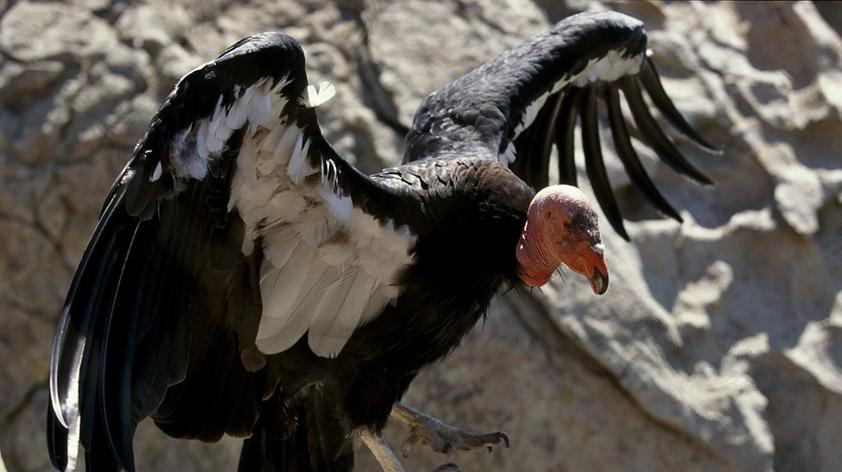
Genotyping the California condor: What we’ve learned
In 1987, after a steep population decline, the last wild California condor was brought into human care. Three decades later, this species has become a conservation success story thanks to the efforts of the San Diego Zoo and its many partners. The population now stands at over 500 birds, with roughly half living in the wild.
To pull off this massive undertaking, scientists and managers have used a variety of methods, including breeding programs, genetic management, reintroductions back into the wild, and mitigation of negative human impacts on the species such as lead poisoning.
The Conservation Genetics lab at the San Diego Zoo has implemented genetic methods for many years to perform sex determination and parentage analysis on over 900 individual California condors. Genetic sex determination is important because this species is sexually monomorphic, meaning males and females are visually indistinguishable. This information allows managers to understand the ratio of males to females in the population, and to make breeding pair recommendations.
In the laboratory, we perform parentage analyses for every California condor sample that comes through our doors, which involves the use of microsatellites, genetic markers consisting of short, repetitive DNA segments. When we compare microsatellites between parents and offspring, we can confirm or refute a parental relationship since each chick gets half of its genetic variants from each parent.
This method has allowed us to maintain an accurate pedigree over the years, catching mistakes and clearing up parentage mysteries. Genotyping has also provided us with new and exciting information about the California condor’s behavior!
California condors tend to make long-term pairings and raise chicks together. Interestingly, there have been a few documented cases of trios of adults raising a chick together. In central California, field biologists observed two females and a male raising a chick as a group. After performing microsatellite genotyping in the lab, we were able to identify the actual dam, and document parental care from a female that did not produce the chick, an event we had not seen before.
California condors have been considered to be monogamous, meaning they only have one mate at a time. However, our parentage analyses have shown that this is not always the case!
Like many birds, California condors sometimes mate outside their pairings, and the result of this is what we call extra-pair paternity. In one recent case, after genotyping, a wild condor chick did not qualify as the offspring of her observed parents. This chick had never been observed with any other adults, but thanks to our extensive database of samples, we were able to compare its genotype to all living adults in the area. We were able to identify the true sire, who had opportunistically mated with the observed dam, leading to this case of extra-pair paternity.
Understanding the complex relationships between adults and offspring such as in the cases mentioned here reveals behavioral features of this species that are difficult to document through field observations alone.
Although the California condor is doing relatively well compared to 30 years ago, the population still has a long way to go before it will be self-sustaining in the wild. Until that happens, our genetic work will continue to be an important tool in both managing the population and learning more about the species’ behavior.













